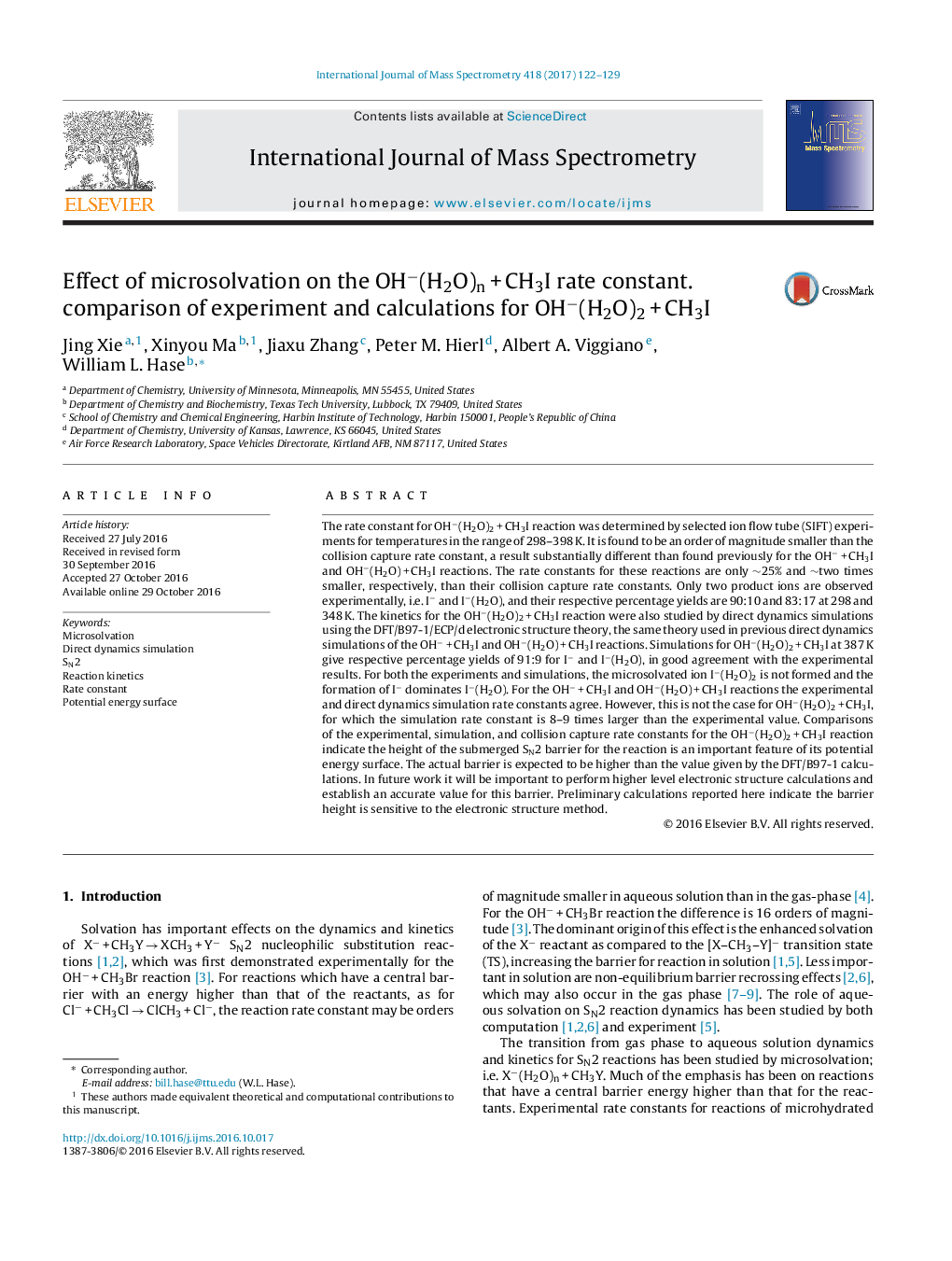| کد مقاله | کد نشریه | سال انتشار | مقاله انگلیسی | نسخه تمام متن |
|---|---|---|---|---|
| 5134225 | 1492214 | 2017 | 8 صفحه PDF | دانلود رایگان |

- SN2 reaction kinetics, comparison of experiment and computation.
- Need for high-level electronic structure calculations.
- Only two product ions are formed, I- and I-(H2O).
- Non-equilibrium microsolvation reaction dynamics.
The rate constant for OHâ(H2O)2 + CH3I reaction was determined by selected ion flow tube (SIFT) experiments for temperatures in the range of 298-398 K. It is found to be an order of magnitude smaller than the collision capture rate constant, a result substantially different than found previously for the OHâ + CH3I and OHâ(H2O) + CH3I reactions. The rate constants for these reactions are only â¼25% and â¼two times smaller, respectively, than their collision capture rate constants. Only two product ions are observed experimentally, i.e. Iâ and Iâ(H2O), and their respective percentage yields are 90:10 and 83:17 at 298 and 348 K. The kinetics for the OHâ(H2O)2 + CH3I reaction were also studied by direct dynamics simulations using the DFT/B97-1/ECP/d electronic structure theory, the same theory used in previous direct dynamics simulations of the OHâ + CH3I and OHâ(H2O) + CH3I reactions. Simulations for OHâ(H2O)2 + CH3I at 387 K give respective percentage yields of 91:9 for Iâ and Iâ(H2O), in good agreement with the experimental results. For both the experiments and simulations, the microsolvated ion Iâ(H2O)2 is not formed and the formation of Iâ dominates Iâ(H2O). For the OHâ + CH3I and OHâ(H2O) + CH3I reactions the experimental and direct dynamics simulation rate constants agree. However, this is not the case for OHâ(H2O)2 + CH3I, for which the simulation rate constant is 8-9 times larger than the experimental value. Comparisons of the experimental, simulation, and collision capture rate constants for the OHâ(H2O)2 + CH3I reaction indicate the height of the submerged SN2 barrier for the reaction is an important feature of its potential energy surface. The actual barrier is expected to be higher than the value given by the DFT/B97-1 calculations. In future work it will be important to perform higher level electronic structure calculations and establish an accurate value for this barrier. Preliminary calculations reported here indicate the barrier height is sensitive to the electronic structure method.
150
Journal: International Journal of Mass Spectrometry - Volume 418, July 2017, Pages 122-129